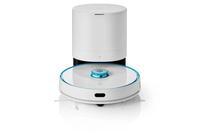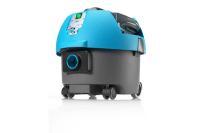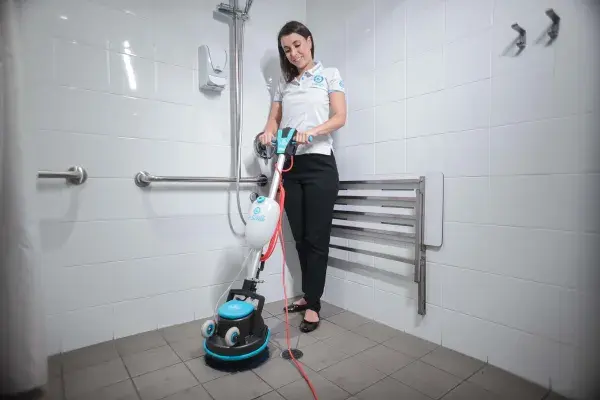You are reading: How to Clean Vinyl Flooring: The Ultimate Step-by-Step Care & Maintenance Guide
20 November 2025
8min read time
Paul P.
How to Clean Vinyl Flooring: The Ultimate Step-by-Step Care & Maintenance Guide
Share:

Did you know that vinyl flooring has become one of the most popular choices in Australian homes due to its durability and affordability? Compared to other flooring types, vinyl stands out for its superior durability, water resistance, and ease of maintenance, making it a top choice for busy households. Yet, I often hear homeowners say, “I’m not sure if I’m cleaning it right!” And that’s exactly why this guide exists! In this article, I’ll walk you through how to clean vinyl flooring safely and effectively, without damaging its protective wear layer. Whether you’re dealing with daily dust, sticky spills, or deep cleaning, you’ll find everything you need right here—including expert tricks that most people overlook!
What You Need Before Cleaning Vinyl Flooring
Essential tools:
Soft-bristle broom, soft mop, vacuum cleaner (without a beater bar or with a hard-floor setting), microfiber mop, co-botic 1700 , and i-mop XL
Safe vinyl floor cleaners to use:
pH-neutral floor cleaner, vinyl floor cleaner, mild detergent, dish soap (diluted in water), or other gentle cleaning solutions specifically designed for vinyl flooring
Cleaners and tools to avoid:
Abrasive cleaners, harsh chemicals, vacuums with a beater bar, or any tools that could scratch or damage the surface
Checklist for quick prep before starting:
Remove loose dirt, pet hair, and debris with a soft-bristle broom or vacuum cleaner before wet cleaning
Prepare your cleaning solution (using a recommended floor cleaner, vinyl floor cleaner, mild detergent, or dish soap)
Use a soft mop for mopping and a soft cloth for wiping and drying surfaces after cleaning
How to Clean Vinyl Flooring Daily & Weekly
Step-by-step daily cleaning routine
For general cleaning of vinyl plank flooring, start by sweeping or vacuuming daily to remove dust and debris. This routine is essential for regular maintenance and helps preserve the appearance and durability of your vinyl planks. Pay special attention to high traffic areas like entryways, kitchens, and hallways, as these spots accumulate more dirt and require more frequent cleaning. For best results, clean vinyl plank floors using a soft broom or vacuum with a hard floor setting.
Sweeping vs. vacuuming: which is better and when
Sweeping is ideal for quick daily touch-ups, especially in high-traffic areas. Vacuuming is effective for deeper general cleaning, particularly when using a vacuum designed for hard surfaces. Both methods are important for regular maintenance of vinyl plank flooring and help prevent dirt from scratching or dulling the surface.
How often to mop vinyl floors
It’s recommended to mop your floor weekly, especially in high-traffic areas, to maintain cleanliness and prevent buildup. When cleaning vinyl plank flooring, always use a damp mop rather than soaking the floor with water. Excess water can seep into seams and cause warping or damage to vinyl planks. Using a damp mop is the preferred method to clean vinyl plank floors, as it gently removes grime without risking moisture damage.
Best methods to prevent dirt buildup
To prevent dirt buildup on vinyl plank flooring, establish a routine of general cleaning and regular maintenance. Use doormats and area rugs in high-traffic areas to trap dirt before it reaches your floors. Clean vinyl plank floors frequently, focusing extra attention on spots that see the most use. Always use a damp mop for cleaning vinyl plank flooring, as this method is safe and effective for maintaining both vinyl planks and vinyl plank flooring.
Deep Cleaning Vinyl Floors (Safely!)
What “deep cleaning” actually means for vinyl
Deep cleaning vinyl flooring involves more than just regular sweeping or vacuuming. It requires removing embedded dirt and grime that can accumulate over time. However, improper deep cleaning may only scratch the surface of underlying issues if not done thoroughly, potentially leaving behind dirt or moisture that can cause long-term damage.
Choosing the right pH-neutral cleaner
Always use a pH-neutral cleaner specifically designed for vinyl flooring. Avoid abrasive cleaners and harsh cleaning products, as these can damage the floor’s protective coating and cause discoloration. Gentle, water-based cleaners are best for maintaining the appearance and longevity of your vinyl.
How to mop without leaving streaks
For best results, use an i-mop XL when cleaning vinyl floors. It prevents the use of excess water, which can seep into seams and cause warping or lifting. The i-mop XL ensures that moisture does not remain on the floor, helping to avoid subfloor damage or buckling.
Rinsing methods to avoid residue
On the other hand, if you use a damp microfiber mop to clean vinyl floors, make sure to rinse the floor afterward with clean water using a well-wrung mop to remove any cleaner residue. Avoid leaving excess water on the surface, and dry the floor thoroughly to prevent moisture-related issues.
How to Remove Stains from Vinyl Flooring

Removing food and drink stains
Clean up spills immediately to prevent stains from setting into your vinyl plank flooring. Use a soft cloth to blot the spill gently, avoiding rubbing, which can spread the stain. For stubborn spots, mix a mild detergent with warm water and use the solution to clean the area. Rinse with clean water and dry with a soft cloth to prevent streaks.
Tips for ink, makeup, or dye stains
Act quickly to prevent stains by wiping up any ink, makeup, or dye spills as soon as they occur. Use a soft cloth dampened with a mild detergent solution to gently blot the stain. Avoid harsh chemicals, as they can damage the floor’s surface. Rinse the area with clean water and dry thoroughly with a soft cloth.
Adhesive and sticker residue removal
Remove adhesive or sticker residue by gently rubbing the area with a soft cloth. If needed, apply a small amount of mild detergent mixed with water to help lift the residue. Rinse with clean water and dry with a soft cloth to maintain the floor’s finish.
When to use (and NOT use) baking soda
Baking soda can be used for tough stains, but always test in an inconspicuous area first. For routine cleaning and most stains, a mild detergent and a soft cloth are recommended to prevent stains and protect your vinyl plank flooring. Avoid abrasive scrubbers or harsh chemicals, as they can damage the surface.
How to Clean Different Types of Vinyl Flooring
Luxury Vinyl Plank (LVP) care
When comparing vinyl to other hard flooring types like laminate or tile, vinyl stands out for its resilience and ease of maintenance. However, vinyl floor cleaning requires specific methods to preserve its appearance and durability. For luxury vinyl plank floors , regular sweeping and damp mopping are essential. Use only cleaners designed for vinyl planks to avoid damage or warping. Avoid abrasive tools or harsh chemicals, as these can scratch or dull the surface of your vinyl planks. Promptly clean spills to prevent staining, and consider using felt pads under furniture to protect your vinyl plank floors from scratches.
Luxury Vinyl Tile (LVT) specifics
LVT shares many care requirements with LVP, but its tile format may require extra attention to grout lines or seams. Always use a pH-neutral cleaner and avoid excessive water to maintain the integrity of your LVT flooring.
Sheet vinyl cleaning tips
Sheet vinyl is seamless and easy to clean, but it can be more susceptible to tears or dents. Use a soft broom or vacuum for daily cleaning and a damp mop for deeper vinyl floor cleaning. Avoid dragging heavy furniture across sheet vinyl to prevent damage.
Differences between waterproof vs. standard vinyl
Waterproof vinyl flooring offers superior protection against spills and moisture compared to standard vinyl. Both types benefit from regular vinyl floor cleaning routines, but waterproof options are ideal for areas prone to water exposure, such as bathrooms or kitchens. Always follow manufacturer recommendations for cleaning products and methods to ensure the longevity of your vinyl flooring types.
Advanced Cleaning Techniques
For those times when your vinyl floors need more than just a quick sweep or mop, advanced cleaning techniques can make all the difference. Start by using a microfiber mop and a cleaning solution specifically designed for vinyl flooring to remove dirt and debris without leaving streaks. For stubborn stains or scuff marks, a soft-bristle brush can be used to gently scrub the affected area. If you’re dealing with tough spots, mix baking soda with a little water to form a paste, apply it to the stain, and let it sit for a few minutes before rinsing with warm water and wiping dry with a soft towel. Remember, steam mops and steam cleaners are not recommended for vinyl floors, as the heat and moisture can damage the surface. By using these advanced techniques, you’ll keep your vinyl floors spotless and in top condition.
Eco-Friendly Cleaning Options
If you’re looking for ways to clean your vinyl floors that are gentle on both your home and the environment, there are plenty of eco-friendly options to choose from. A simple mixture of white vinegar and water makes an effective, non-toxic cleaning solution for removing dirt and grime from vinyl flooring. For a more specialized approach, opt for a pH-neutral cleaner that’s specifically designed for vinyl and free from harsh chemicals. You can also achieve great results by using a microfiber mop with just warm water, which is perfect for regular cleaning and maintaining your floor’s appearance. These eco-friendly methods help you keep your vinyl floors clean while protecting your family and the planet.
Seasonal Cleaning Tips
As the seasons change, so do the cleaning needs of your vinyl floors. In spring and summer, increased foot traffic and outdoor activities can bring in more dirt and debris, making regular cleaning and vacuuming especially important. During fall and winter, focus on spot cleaning spills and scuff marks from holiday gatherings and wet weather. No matter the season, stick to a cleaning routine that includes sweeping or vacuuming regularly, mopping with a damp mop, and addressing stains as soon as they appear. To prevent scratches and damage, use floor mats at entryways and place felt pads under furniture legs. These simple steps will help keep your vinyl floors protected and looking their best all year round.
Troubleshooting Common Issues
Even with the best care, vinyl floors can sometimes develop scratches, stains, or damage from heavy furniture. If you notice a scratch, try gently scrubbing it with a paste made from baking soda and water, or use a scratch remover designed for vinyl flooring. For stains, reach for a cleaning solution specifically designed for vinyl, and follow up with your regular cleaning routine to restore your floor’s appearance. To prevent further damage from heavy furniture, always use felt pads or floor protectors under furniture legs. Addressing these issues promptly and maintaining a consistent cleaning routine will help keep your vinyl floors looking their best and extend their lifespan.
What NOT to Do When Cleaning Vinyl Floors
Common mistakes that damage vinyl
Avoid using abrasive tools like steel wool when cleaning vinyl flooring, as they can scratch and damage the surface. Never drag furniture across vinyl floors; always lift and move furniture to prevent scratches and dents. Protect your vinyl flooring from direct sunlight by using window coverings, mats, or rugs, as prolonged exposure can cause fading and damage.
Never Use Steam Mops on Vinyl Flooring
Steam mops force high heat and moisture into the floor, which can break down the adhesive, cause warping, and weaken the protective top layer. Even “waterproof” vinyl isn’t designed to withstand prolonged steam exposure.
Stay Away From Harmful Chemicals
Cleaners containing ammonia, bleach, acetone, or abrasive powders can discolor the vinyl, degrade the finish, and erode the protective coating. Stick to pH-neutral cleaners made specifically for vinyl.
Prevent Wear Layer Deterioration
Excessive water, harsh scrubbing, and repeated use of strong detergents can weaken the wear layer over time. Protect it by cleaning gently, wiping spills promptly, and using felt pads under furniture to minimize friction and pressure.
Maintenance Tips to Keep Vinyl Flooring Looking New

How to prevent scratches and scuffs
To keep your vinyl floor looking its best, always sweep, vacuum, and mop regularly to remove dirt and debris that can cause scratches. Place doormats at entryways to catch grit before it reaches your floors. Avoid using abrasive cleaners or scrubbers, as these can dull the surface and damage the floor's appearance.
Best mats and rugs for vinyl floors
Choose mats and rugs with non-rubber, non-latex backings to prevent discoloration or staining. Opt for soft, woven materials that are gentle on the floor. Clean mats and rugs frequently to avoid dirt buildup that could scratch the vinyl.
Protecting vinyl from furniture
To prevent dents and scratches, always lift furniture when moving it instead of dragging. Place furniture pads, such as felt pads or rubber protectors, under all furniture legs to provide a protective barrier between the furniture and the vinyl floor. Regularly check and replace worn-out pads to ensure ongoing protection.
Proper long-term floor care schedule
Establish a regular maintenance routine that includes sweeping, mopping with a gentle cleaner, and promptly cleaning spills. This helps preserve the floor's appearance and prevents the buildup of grime or stains. Periodically inspect the floor for signs of wear and address issues promptly to maintain its visual appeal over time.
Conclusion
Keeping vinyl flooring clean doesn’t have to be complicated! With the right tools, proper cleaning solutions, and a consistent routine, your floors can stay bright, shiny, and damage-free for years. Now that you know exactly how to clean vinyl flooring, start implementing these simple habits—and enjoy beautiful floors that feel brand-new every day. Ready to upgrade your cleaning routine? Start with the daily maintenance checklist and watch the difference!
Book a demo to learn more!
Products Featured Inside this Article
Media and Insights
Join the movement that's changing what clean means.
Be part of a cleaner world. Get a live demo at a time that suits you.
Book a Demo











